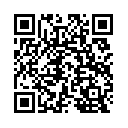Package qrcode implements a QR Code encoder.
A QR Code is a matrix (two-dimensional) barcode. Arbitrary content may be encoded, with URLs being a popular choice :)
Each QR Code contains error recovery information to aid reading damaged or obscured codes. There are four levels of error recovery: Low, medium, high and highest. QR Codes with a higher recovery level are more robust to damage, at the cost of being physically larger.
import qrcode "github.com/skip2/go-qrcode"- Create a 256x256 PNG image:
var png []byte
png, err := qrcode.Encode("https://example.org", qrcode.Medium, 256)- Create a 256x256 PNG image and write to a file:
err := qrcode.WriteFile("https://example.org", qrcode.Medium, 256, "qr.png")- Create a 256x256 PNG image with custom colors and write to file:
err := qrcode.WriteColorFile("https://example.org", qrcode.Medium, 256, color.Black, color.White, "qr.png")All examples use the qrcode.Medium error Recovery Level and create a fixed 256x256px size QR Code. The last function creates a white on black instead of black on white QR Code.
The maximum capacity of a QR Code varies according to the content encoded and the error recovery level. The maximum capacity is 2,953 bytes, 4,296 alphanumeric characters, 7,089 numeric digits, or a combination of these.
To aid QR Code reading software, QR codes have a built in whitespace border.
If you know what you're doing, and don't want a border, you can set the .DisableBorder field on the QRCode type.
code, err := qrcode.New("https://example.org", qrcode.Medium)
code.DisableBorder = true- http://en.wikipedia.org/wiki/QR_code
- ISO/IEC 18004:2006 - Main QR Code specification (approx CHF 198,00)

